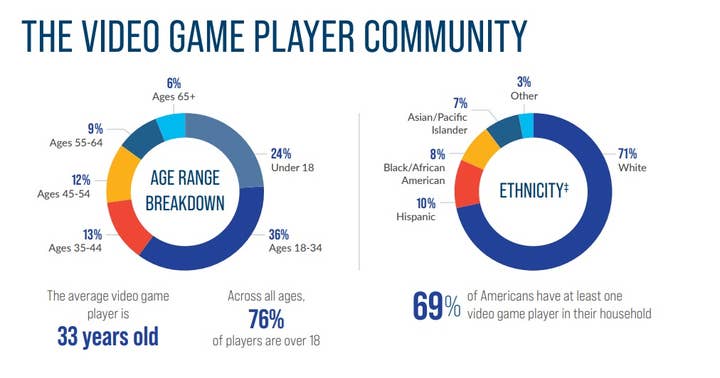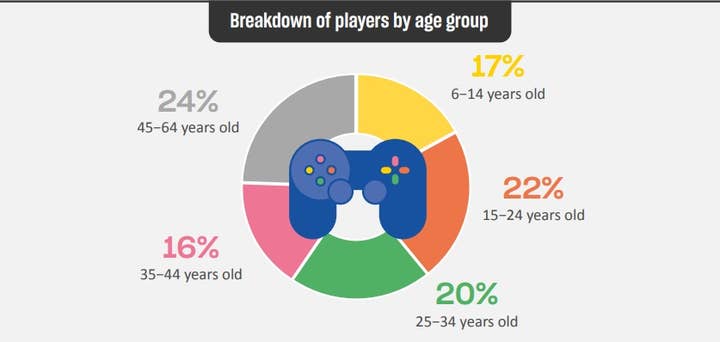How do Europe's gamers compare to America's?
ISFE and EGDF's Key Facts report gives a chance to compare and contrast the region with the ESA's Essential Facts numbers
The Interactive Software Federation of Europe and the European Games Developer Federation today released their Key Facts report, an annual overview of the European market that provides a snapshot of who is playing games, how much they're spending on them, and other such details.
While it's valuable to have such data points, most of the numbers only change modestly year-to-year, making headline takeaways sometimes difficult to find for news organizations. So this year we thought it would be interesting to compare these Europe trade groups' bigger picture report with that of its American counterpart, the Entertainment Software Association's Essential Facts report, normally released around E3 each year.
One area where the two markets were similar was in gender breakdown, with the US having 48% of players identify as female and Europe seeing that figure come in at 47.8%.
For market size, the Key Facts report cited GameTrack and Newzoo data as putting the European market in 2021 at €23.3 billion ($23.1 billion at the moment after a significant slide against the dollar in recent days). Meanwhile, the ESA said Americans spent $60.4 billion on gaming last year, citing NPD Group/Sensor Tower figures.

That discrepancy is naturally related to the playerbase. While the ESA said there were more than 215 million active players in the US last year, the European Key Facts report put the continent's figure at just under 125 million.
The two reports also had different criteria for what constituted a game player. In the US report, someone had to play video games for an hour a week to be considered a game player. In the European report, the minimum threshold was playing games once a year. (7% of European gamers played once a year.)
The inclusion of such sporadic players may have impacted Europe's average playtime figures, which were reported as 9 hours a week in Europe for 2021, down from a pandemic-boosted 9.5 hours in 2020.
In the US, the ESA's 2022 report found that average time spent playing games each week was 13 hours, up from 12 hours in the 2021 report.
There were also differences in the two markets' ratings systems. While the ESA reported that 84% of American parents were aware of the ESRB ratings system, only 67% of European parents were aware of PEGI age labels.
The breakdown in how those labels are doled out was also different, although that can't be helped given their categories don't line up perfectly.
Of the more than 8,000 PEGI-rated games last year, 39.5% received the lowest age rating of 3, with the percentages steadily decreasing for each higher category. 20% of games received a 7 label, 18% of games were given a 12, and 15% received a 16. The most restrictive 18 rating went to just 7.5% of games.
The ESRB rated significantly fewer games – 4,839 – and gave 50% of them its lowest age rating, E for Everybody. The E10+ for Everybody 10 and Older rating was given to 16% of games, with 22% of games receiving a T for Teen. 12% of games received an M for Mature, while no games were given an AO for Adults Only in the past year.
There are also differences in which facts and figures are contained in the two reports. The ESA included demographic information on the age, gender, and ethnicity of gamers, while the European report limited its demographics to age and gender.
The European Key Facts report also notes that there has been a significant drop-off in children making in-game purchases, falling from 42% in 2018 to 19% in 2020.
The American Essential Facts report instead says 92% of children must obtain their parents permission to make in-game purchases, and separately notes that 67% of players make in-game purchases at least a few times a year.

